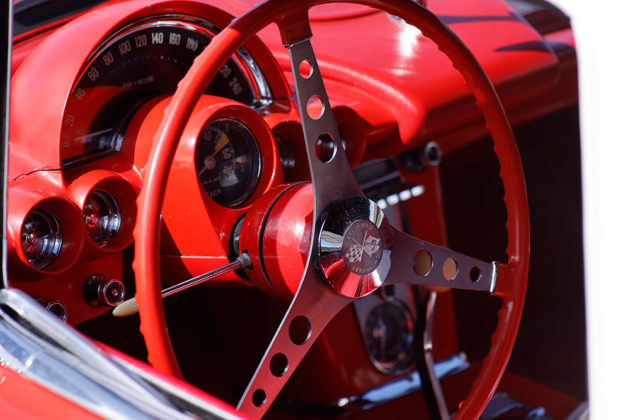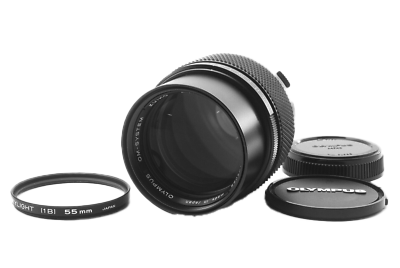Lens overview
The Zuiko Auto‑T 100 mm f/2 is a fast, compact short‑tele for the Olympus OM mount. It uses ED glass up front and a floating rear group for close‑range correction—rare features for its era—delivering high central acuity and unusually smooth blur at f/2. Typical specs: 7 elements in 6 groups, 9‑blade diaphragm, 0.7 m minimum focus with ~1:5 reproduction, 55 mm filters, and 520 g. Angle of view is 24°.
The lens is entirely built in Japan; it was introduced in the early 1980s. Many sources list 1980 as the announcement, while MIR notes it appeared after the OM‑4 (1983/84)—either way, it belongs to the later, high‑spec OM primes.
Pricing (then & now)
Period literature and contemporary accounts positioned it as a premium lens priced well above the 100/2.8; MIR cites a ~US $700 retail context at the time. Today, the used market typically runs US$600–1,200+, depending on condition/box, with recent dealer sales around €649–695 for an acceptable quality lens.
Build and ergonomics
All‑metal construction with a broad, grippy focusing ring and very long throw (~290° total) for precise manual focus. The aperture ring (front‑positioned, f/2–22) has distinct full‑stop clicks, and there’s an exceptional built‑in short pull‑out hood. On modern bodies, the lens balances well with a small grip; the 55 mm filter size keeps accessories simple.
Optical performance
- Sharpness — Excellent center at f/2 with notably good mid‑frame; corners come up by f/4–5.6. Overall, a standout for a fast vintage 100 mm.
- Color & contrast — Neutral with solid micro‑contrast; the ED element helps rein in lateral CA for the era.
- Bokeh & rendering — A key strength: creamy background blur and round highlights from the 9‑blade iris; pleasing subject separation at portrait distances.
- Flare & CA — Coatings are good but not modern‑level; axial CA can appear on high‑contrast edges, wide open, and backlight can flare—use the hood and mind strong sources.
- Distortion & vignetting — Geometric distortion is negligible; light fall‑off wide open is mild and improves when stopped down.
Digital adaptation
- Mirrorless (Canon RF, Nikon Z, Sony E, L‑mount, Fuji X): Simple OM→mirrorless adapters preserve infinity; set IBIS to 100 mm; focus guidance works well on the Canon R5.
- Canon EF DSLRs: OM (46.0 mm FFD) adapts cleanly to EF (44.0 mm) with a thin mechanical ring—infinity retained.
- Nikon F DSLRs: OM 46.0 mm → F 46.5 mm is longer, so glass‑less adapters lose infinity; use Nikon Z mirrorless instead for the full range.
- EXIF & handling: Manual focus only, but focus guidance works with an appropriate adaptor. Consider adding EXIF in post-processing if your workflow depends on searchable lens tags.
Historical and collector context
This was one of the flagship OM short-tele lenses, part of Olympus’s push into ED‑glass primes in the early‑mid 1980s (alongside halo lenses like the 180/2 and, later, the 35–80/2.8 ED). It’s scarcer than the 100/2.8 and is often chased by collectors and portrait shooters; production volume appears lower than that of mass‑market OM lenses.
Impressions
Treat it as a fast portrait & short‑tele with unusually usable f/2: focus on the eyes, keep backgrounds textured but not chaotic to exploit the smooth bokeh, and consider f/2.8–4 for extra bite without losing character. On IBIS bodies, it’s easy to hand‑hold; on non‑IBIS cameras, aim for 1/200 s+ at f/2.
Sample Photos
Verdict — Pros and Cons
Pros
- Standout wide‑open performance for a vintage 100 mm (sharp center, pleasing mid‑frame)
- Smooth, rounded bokeh; 9‑blade iris helps keep highlights circular
- ED glass + floating optics; close‑focus 0.7 m with ~1:5 macro capability
- Compact for a 100/2; straightforward mirrorless adaptation (infinity kept)
Cons
- Pricey versus alternatives (and rarer than the 100/2.8)
- Axial CA wide open; flare can intrude with hard light
- Nikon F DSLR adaptation can’t reach infinity without optics (use Z instead)









